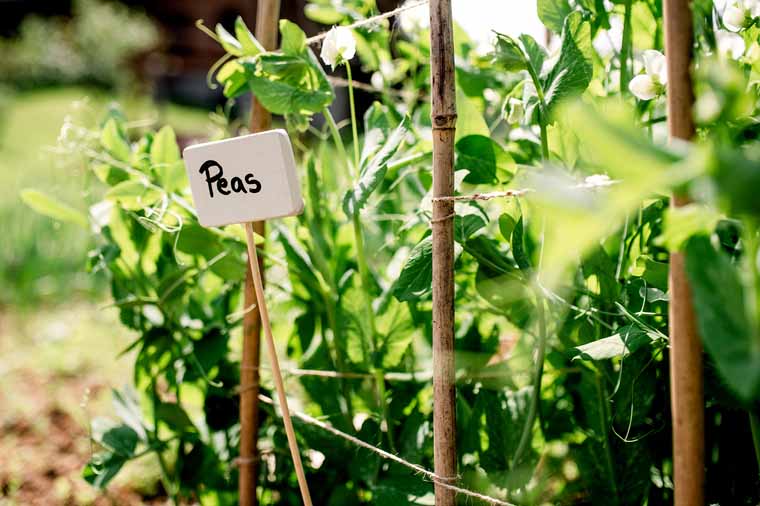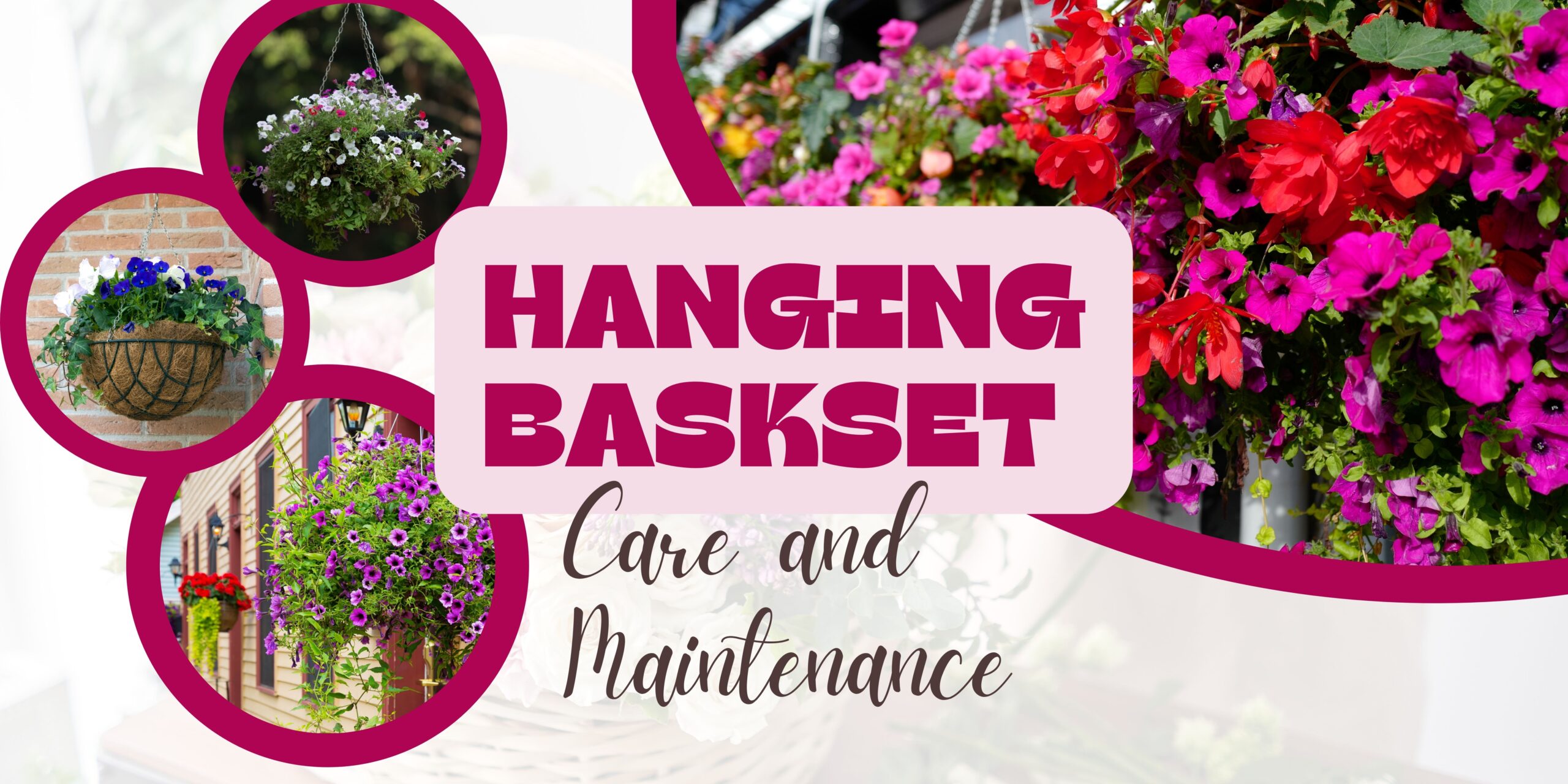Knowing Your Options
More and more, many modern day gardeners are turning away from conventional practices in an effort to garden more effectively with less negative impact on the environment. Knowledge of the different principles and structures can help provide a good starting point as you decide how to plan your garden.
Garden Principles
Conventional Gardening
Conventional gardening is primarily focused on maximized output with the least amount of work. Those who use conventional gardening practices will often use commercial products, such as synthetic fertilizers, pesticides and herbicides, to reach their goals.
Organic Gardening
Organic gardening focuses on the health of the larger ecosystem, looking for solutions that improve the health of the soil, the plant, and the animals that surround the garden. They achieve this primarily through omitting synthetic fertilizers, pesticides, and herbicides, opting for natural based products or no products at all. This method usually involves a lot of composting and cover crops.
Biodynamic Gardening
Biodynamic gardening is very similar to organic gardening and follow similar practices, however they focus the timing of their practices around the natural rhythms of nature, both on earth and in the stars. Biodynamic gardening is based on many ancient techniques collected across many cultures throughout time.
Sustainable Gardening
Sustainable gardening is also similar to organic gardening in the concern for the health of the larger ecosystem, however it shifts focus to the long term health and sustainability of the gardening practices used over many years. Sustainable gardeners are more likely to incorporate closed-loop systems for rain harvesting, soil building, and biodiversity.
Permaculture
Permaculture falls under the broader category of sustainable gardening. It includes concern for the health of the larger ecosystem and concern for the long term sustainability of its practices, but it also has a heavy focus on designing self-sustaining systems based on the observations of flourishing ecosystems found in nature. It includes a set of design principles using whole systems thinking and is synonymous with regenerative agriculture, rewilding, and community resilience.
Garden Structures
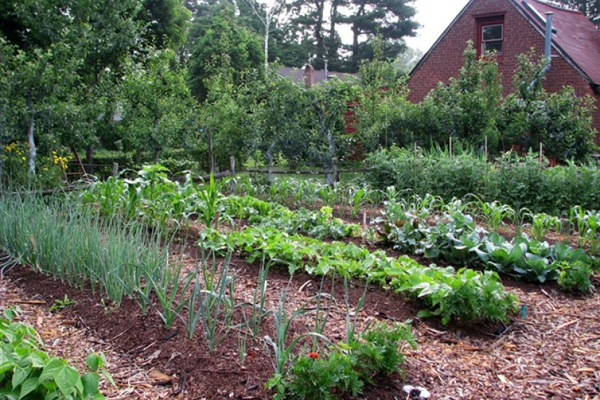
In-Ground Gardens
In-ground gardens have been used conventionally since humankind first started to till the land. When we first think of a vegetable garden, most of us probably think of an in-ground garden. Since it is the most known and most practiced over the history of western agriculture, many people still gravitate towards in-ground gardens. Despite their popularity, they take a bit a hard labour to prep and can be more difficult to maintain.
PROS : Cost-effective.
CONS : Good soil can be difficult to achieve, more prone to invasive grasses and weeds, a slower to start due to muddy ground in the spring, can be wasteful on water, tilling kills worms and microbes needed for good soil health and soil is more likely to compact over time.
GETTING STARTED : For a succesful in-ground garden you must first have a good spot with adequate sunlight and good soil drainage. Then you’ll need to rip up the sod, till the soil and continue to work in soil-amendments until you reach the desired level of soil fertility. You will want to designate your rows and cover your walking paths with something to help prevent weed growth, such as mulch or straw.
CONFIGURATIONS :
Rows : Traditionally, in-ground gardens are done in rows with paths between each row for the gardener to walk between plantings. Usually each row is assigned a different plant or two. This is the easiest configuration to plan for and lends itself well to succession plantings.
Custom : More recently, we have seen an emergence of in-ground gardens being created in more intuitive shapes, maximizing the planting space available and allowing for methods such as companion planting to be more effectively used. These configurations require more planning up front, but can be well worth it, both in functionality and in aesthetic.
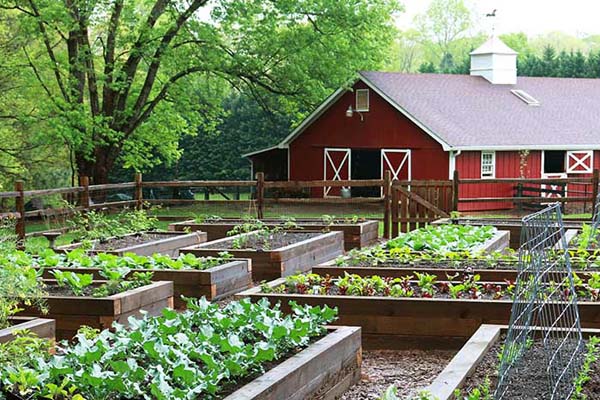
Raised Gardens
Another popular choice are raised beds. Raised beds are created by building garden boxes from wood, timbers, bricks, or even certain metals. Before choosing which material you may want to use, consider how those materials will hold up over time with regular exposure to water, sun and garden tools. Also worth noting, some materials are treated to be weather resistant, but some of those treatments can leach into your soil and be toxic to you and your plants.
PROS : Allows for better drainage, reduces strain on the body while tending the garden, easier to achieve better soil quality, reduces soil compaction making it easier to weed.
CONS : Building the beds can be expensive, once beds are in place it is a commitment to keep them there.
GETTING STARTED : For a successful raised bed you will still need to find a good spot with adequate sunlight, but good soil drainage is no longer a priority for the location. Before placing your boxes you may want to pull up the sod in that location. Alternatively, boxes can be built right over the sod so long as a grass and weed suppressant is used, like a solid layer of cardboard, before filling your boxes with garden soil.
CONFIGURATIONS :
Rows : Using the same idea as the in-ground garden, rows can be achieved by creating boxes that are 4ft x 8ft and planted similarly.
Square Foot Garden : Square foot gardening uses a system designed around having a series of 4ft by 4ft boxes. There are a number of resources available online to plan a square foot garden. This method makes garden planning super easy, especially for the beginner gardener.
U-Bends : Are designed to maximize planting space by creating one continuous box that wraps around a central walking space.
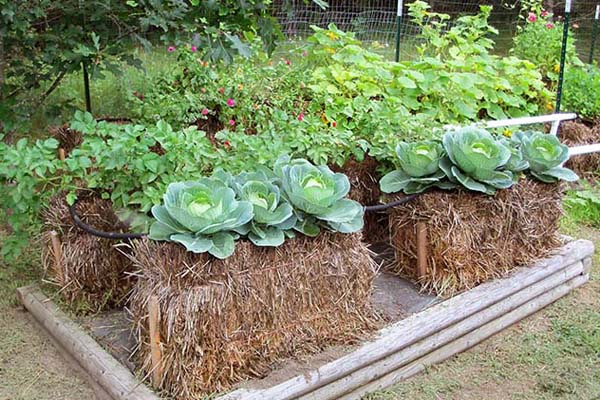
Straw Bale Gardens
Have you ever heard of straw bale gardening? It’s a thing! Straw bales can provide an easy to start growing medium for growing plants, with some unique benefits.
PROS : Cheaper than building garden boxes, no digging or soil building required, lightweight and easy to move as needed, provides good drainage, and easy to weed.
CONS : They can dry out fast, they will need to be conditioned so the center of the bale provides the needed growth medium, some straw bales have been previously sprayed by farmers by weed killer which is toxic to consume and can inhibit plant growth.
GETTING STARTED : You will need to find straw bales that have not been treated. Once you have your bales, you will need two weeks to properly condition them before planting.
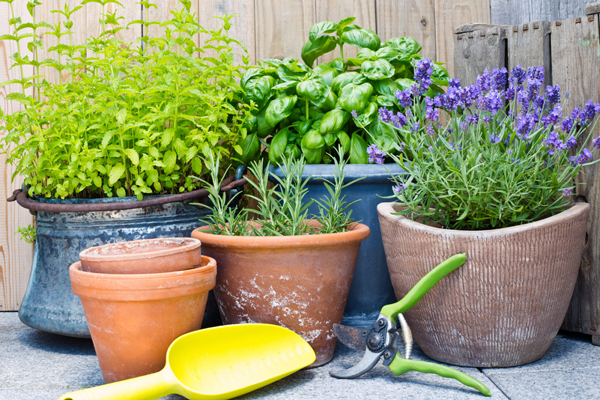
Container Gardens
Growing in pots is a great way to maximize space, increase productivity, or use a spot that normally would not be able to have plants grown. This is an especially great option for those with limited to no green space. Container gardens can exist nearly anywhere there is good light, balconies, decks and patios are all great spots.
PROS : Small footprint, great for those with limited space, non-permanent, pots can be moved as needed.
CONS : Soil will tend to dry out faster, pots can be expensive, pots limit the growth potential.
GETTING STARTED : Find good quality pots with good drainage, be sure to use a veggie grade potting soil instead of garden soil, and make sure you have a good watering schedule so your plants stay hydrated and don’t suffer from water stress.
 |
| 
